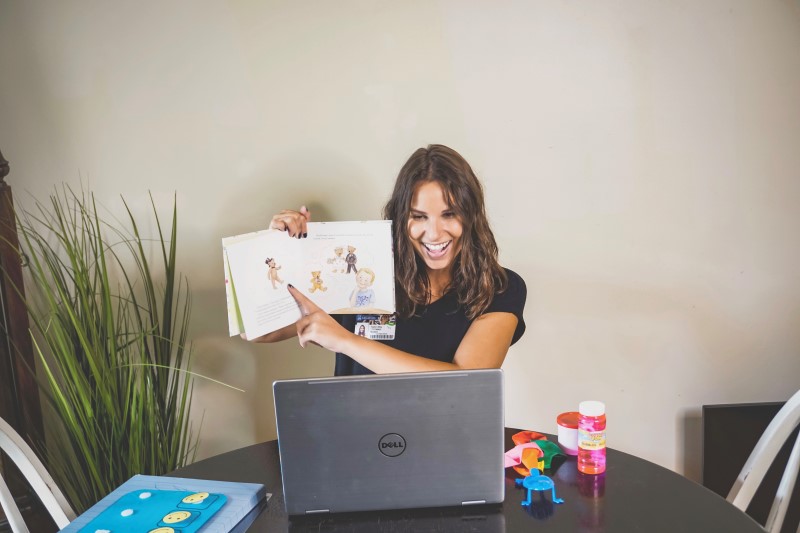School of Communication Sciences and Disorders
Telehealth Therapy
by Hannah Rae Vaden
One of the silver linings of the COVID-19 pandemic is the opportunity it has provided for clients and their families, who did not have easy access to speech or language services prior to the pandemic. Telehealth (a.k.a. telepractice, teletherapy) has opened doors for safe and convenient therapy for clients in the community who cannot leave their homes. Telehealth has also engaged people in the therapeutic process in a new way. Teletherapy pulls parents into their children's therapy sessions as an assistant to clinicians. The experience empowers the parent to learn the therapy or exercise so they can repeat it at home with their child. Parent reinforcement makes therapy more effective because it extends the client's learning beyond the therapy session. Families are becoming partners in ways they never were before. Many families are opting to continue teletherapy this Fall due to the increased efficacy and convenience it offers them.

All this creativity is not without extraordinary effort. Rebecca Bender, 2nd year SLP student, offered her reflections on providing teletherapy, "For me, the two greatest challenges about providing teletherapy have been technological difficulties and keeping clients engaged when providing therapy over the computer." Clinicians are putting in additional work to bridge the gap in engagement that comes with the online format of teletherapy. They have adapted physical techniques to virtual activities that are equally as effective and entertaining. Ms. Bender commented, "Using items I had around the house, I created a make-shift green screen that helped keep therapy engaging for my language client, who had a hard time just sitting down and attending to therapy. He really enjoyed the game-like approach." She went on to say, "I felt the most rewarding aspect of teletherapy was getting to see how creative our field has become and how dedicated we are to serving our clients, no matter the circumstances."
Technology was a big challenge. Clinicians and student clinicians often needed to instruct patients who were less experienced with technology. Ms. Bender noted, "There were many [technology] difficulties during teletherapy such as clients not being familiar with how to join Zoom or technical difficulties such as video that does not work, lagging video/audio due to a poor connection, and even having their laptop restart during the middle of a session without warning." Anyone who has spent time working from home during the pandemic can probably recognize these issues. Still, there are important lessons even in challenging times. "I have had to change my expectations and recognize that a client may not get the same amount of therapy done during an online session, and that is ok," shared Ms. Bender.
The hopes of the faculty and clinical supervisors are twofold. First, they hope to continue using teletherapy after the pandemic ends because the clients are deriving immense benefits from using it. Second, they would like to see telehealth training integrated into the curriculum—either as a full course or a clinical rotation. This would be implemented with the intention of equipping clinicians with teletherapy skills for the future. The UofM CSD services via telepractice will continue to evolve, but even now, important lessons have been learned by the next generation of SLPs. "It is an important skill as a speech pathologist to be flexible. Through teletherapy, I have learned new ways to adapt to the situations around me."
